Welcome to one of the most active flamenco sites on the Internet. Guests can read most posts but if you want to participate click here to register.
This site is dedicated to the memory of Paco de Lucía, Ron Mitchell, Guy Williams, Linda Elvira, Philip John Lee, Craig Eros, Ben Woods, David Serva and Tom Blackshear who went ahead of us.
We receive 12,200 visitors a month from 200 countries and 1.7 million page impressions a year. To advertise on this site please contact us.
|

|
|
I'm back to Flamenco!
|
You are logged in as Guest
|
|
Users viewing this topic: none
|
|
Login  | |
|

   
FullMetalGuitarist
Posts: 88
Joined: Aug. 22 2011

|
 I'm back to Flamenco! I'm back to Flamenco!
|
|
|
Hello all, I'm back here!
Not sure if there is anyone who remembers me though but - Ricardo, Anders, Tod, Grisha, Eli, Ramzi, Chris - how are you? Hope you all are doing well.
Anyway, long story short, I stopped playing flamenco about 3 years ago - moved to play Surf on an electric guitar and some blues-rock later this year.
But, under curious, unexpected and mostly wonderful circumstances I came back to play Flamenco.
During those years I put effort to actually learn some music theory and not only fingers techniques (no wonder I couldn't improvise anything without knowing scales and modes meaning), thus now I'm reading and watching tutorials about Flamenco music theory and thought why won't I ask the experts themselves:
1. As far as I understood, Flamenco is played mostly in the key of E and A (arriba and medio) but in some sources it is said to be either a phrygian major or an 8 note scale containing both major and minor (for example:E F G G# A B C D if we stick to E), and in my Guitar Pro 5 there is another "8 note spanish" which give me the same scale but with A# instead.
So, it there any common Flamenco scale I can re-start my training from?
2. After being absent for some years, do you know any good sources (videos, online free courses) to learn Flamenco? (yes, I'll probably find an actual teacher this time but till then. . . )
Thanks you so much people!
Cheers,
Mark.
|
|
|
|
REPORT THIS POST AS INAPPROPRIATE |
Date Oct. 6 2016 16:54:29
 |
|

   
Ricardo
Posts: 14801
Joined: Dec. 14 2004
From: Washington DC

|
 RE: I'm back to Flamenco! (in reply to FullMetalGuitarist) RE: I'm back to Flamenco! (in reply to FullMetalGuitarist)
|
|
|
quote:
ORIGINAL: FullMetalGuitarist
Hello all, I'm back here!
Not sure if there is anyone who remembers me though but - Ricardo, Anders, Tod, Grisha, Eli, Ramzi, Chris - how are you? Hope you all are doing well.
Anyway, long story short, I stopped playing flamenco about 3 years ago - moved to play Surf on an electric guitar and some blues-rock later this year.
But, under curious, unexpected and mostly wonderful circumstances I came back to play Flamenco.
During those years I put effort to actually learn some music theory and not only fingers techniques (no wonder I couldn't improvise anything without knowing scales and modes meaning), thus now I'm reading and watching tutorials about Flamenco music theory and thought why won't I ask the experts themselves:
1. As far as I understood, Flamenco is played mostly in the key of E and A (arriba and medio) but in some sources it is said to be either a phrygian major or an 8 note scale containing both major and minor (for example:E F G G# A B C D if we stick to E), and in my Guitar Pro 5 there is another "8 note spanish" which give me the same scale but with A# instead.
So, it there any common Flamenco scale I can re-start my training from?
2. After being absent for some years, do you know any good sources (videos, online free courses) to learn Flamenco? (yes, I'll probably find an actual teacher this time but till then. . . )
Thanks you so much people!
Cheers,
Mark.
1. No, it's not modal. It is Phrygian KEY center, the same way the MINOR KEY uses accidentals, i.e. The harmonic, melodic, and natural minor scales mixed depending on harmony/melody, so does Flamenco por medio or por Arriba. If you understand the circle of 5th for it's key relationships you think of the C major position, it's relative minor is A minor...now imagine a third tier called "por Arriba" which all share the same key signature NO SHARPS OR FLATS. For F major, to the left, you have F major, D minor inside, and "por medio" ONE FLAT. Looking to the right side of the circle from C, you have G major, E minor inside, and then imagine "por Granaina" ONE SHARP....to the right again, you have two sharps so it's D major, B minor, and TARANTA, next you have 3 #, it's A major, F#minor and "por Rondeña" or "Do sustonido"...next 4 # it's E major, C# minor, and "por Minera"....need I continue for the entire circle?
It is wrong to think "8 note scale or mode" just as much as it is wrong to think that the key of "A minor" needs to include a G# in the key signature of scale, because the purpose of the accidental is to allow for harmonic movement. MODAL MUSIC DOESNT USE HARMONIC MOVEMENT, IT IS STATIC BASED ON A SINGLE CHORD BASS OR DRONE.
2. Encuentro video, Rito y Geografia del cante.
_____________________________
CD's and transcriptions available here:
www.ricardomarlow.com
|
|
|
|
REPORT THIS POST AS INAPPROPRIATE |
Date Oct. 6 2016 17:46:04
 |
|

   
El Kiko
Posts: 2697
Joined: Jun. 7 2010
From: The South Ireland

|
 RE: I'm back to Flamenco! (in reply to Piwin) RE: I'm back to Flamenco! (in reply to Piwin)
|
|
|
i used to think of it as the modes of the minor scale , not the major ...so you can have a G# or a G natural , depending ...like a misused melodic minor ... 
have a look at minor modes ,,,,in E for example .. just to confuse things ..
the POR ARRIBA , and POR MEDIO thing is just came about as a nonmusical term to achive a key ... based on how the left hand looked from , say , the singers point of view...
Por Medio , is in the middle looking chord ...A MAjor ...
or por arriba ..higher up using the strings above that .. but still major ... so E MAJ ..
edit
you could get a por abajo key ... it would be three strings the other way .. so D maj
this is regardless of where you put the capo ...
por medio could be A , Bb, B, C or C#...for the first 4 frets of the capo position ,,,por medio ....
_____________________________
Don't trust Atoms.....they make up everything.
|
|
|
|
REPORT THIS POST AS INAPPROPRIATE |
Date Oct. 7 2016 15:49:33
 |
|

   
Ricardo
Posts: 14801
Joined: Dec. 14 2004
From: Washington DC

|
 RE: I'm back to Flamenco! (in reply to FullMetalGuitarist) RE: I'm back to Flamenco! (in reply to FullMetalGuitarist)
|
|
|
quote:
ORIGINAL: FullMetalGuitarist
Thank you guys so much! Hello El Kiko!
So if I got it right it should look like that:
E phrygian: E F G/G# A B C D - minor/major
A phrygian: A A# C/C# D E F G - minor/major
I'm uploading here the best circle of 5th I know about, if anyone is interested.
On that same note: I read that the capo is used to changing the song's key (so far I did it only because so did the players in the song without understanding why).
So if the open position is an E phyrgian then capo on 3rd fret (usually Buleria?) will be G phrygian key?
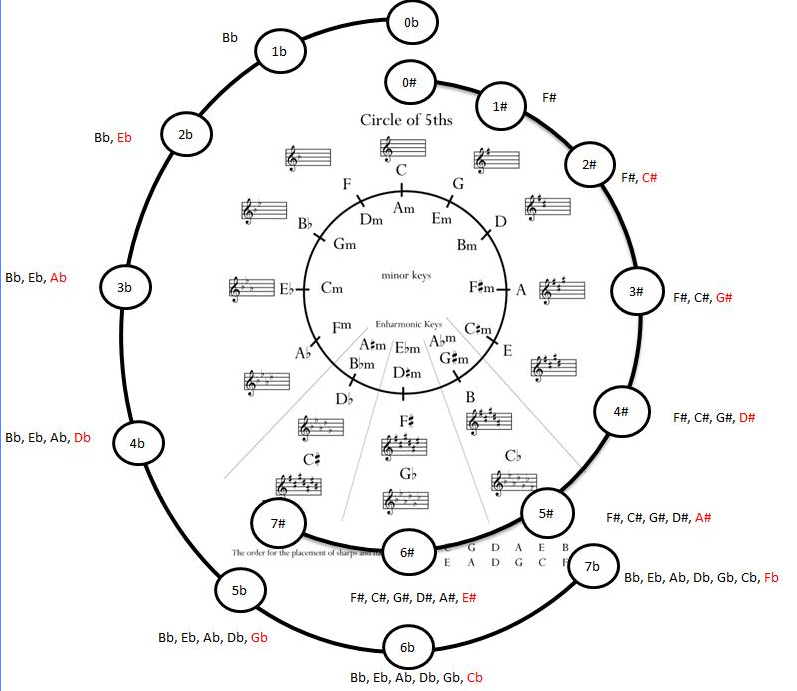
I am so glad you posted the Circle of 5ths, but I would be even more satisfied if demonstrated that you UNDERSTOOD IT.
Saying "A A# C/C# D E F G"....shows that you don't understand it, nor did you understand what I said early about flamenco NOT being based on a mode/scale, but rather is a KEY that makes use of the entire chromatic spectrum as would a song in the relative minor or major key. The absolutely fundamental reason A# is wrong to say and Bb IS correct, as a start, get's to the heart of things.
Scales/Modes:
A Phrygian = A Bb C D E F G
A Phrygian Dominant (mode 5 of D harmonic minor) = A Bb C# D E F G
A Spanish Phrygian = a hybrid of the two scales above often heard in spanishy sounding music, including flamenco sometimes, as you attempted to write above using 8 notes instead of 7.
A ? (Arabic, Hungarian, exotic middle eastern name type things etc) = mode 5 of D double harmonic minor, ABbC#DEFG#.....
POR MEDIO:
A key used in Flamenco that makes use of not only the above types of scales, but the entire chromatic spectrum in order to allow for harmonic movements via tonic to dominant relations, just like it's relative major or minor keys might do. The tonic chord is based on the A major triad, with extension that can include the b9th (Bb), the minor 7th (G), and many other variants, and can superficially be confused for the DOMINANT chord function in the key of D minor. The phrasing and or rhythm of the song structure will distinguish it from being so.
Examples of accidentals against the key signature (one flat) that must be used when accompanying the cante of any palo "por medio" include: C#, of course, B natural (signals E7 chord or G7 chord for example depending on traditional practices), Eb (calls for chords F7 D7b9 Eb, etc to pull to Bb or G minor harmony), F# (to invoke the D7 harmony move to Gm, or as a modal color against the tonic A), and finally G# (to invoke either the Bb7-A CADENCE, or the tritone sub of that cadence, E7-A). These important accidentals that occur in the song forms via the voice are often imitated in the guitar falsetas and you may note that these taken together with the "Phrygian" family of scales above constitute the ENTIRE chromatic scale available.
Regarding Capo use: yes key of E will be transposed up to G at 3rd fret for example...BUT it is important to understand you must describe it with the adjective "Absolute key" or "Concert key or pitch". The reason is that in flamenco practice, just like with music scores or tablature, you pretend there IS NO CAPO in terms of how we think of the music theory. In other words you still say "por Arriba" which means key of E Phrygian regardless of capo position. The reason this is done is because the guitar, unlike piano, retains a special atmosphere or color depending on the key we play in, and we need to retain this atmosphere or vibe regardless of the singers vocal range. The true reason we use the capo is only because of the singer's needs, and as solo guitarists we want to retain certain timberal qualities of the guitar even in absense of a singer.
Images are resized automatically to a maximum width of 800px
_____________________________
CD's and transcriptions available here:
www.ricardomarlow.com
|
|
|
|
REPORT THIS POST AS INAPPROPRIATE |
Date Oct. 7 2016 20:34:55
 |
|

   
Leñador
Posts: 5237
Joined: Jun. 8 2012
From: Los Angeles

|
 RE: I'm back to Flamenco! (in reply to FullMetalGuitarist) RE: I'm back to Flamenco! (in reply to FullMetalGuitarist)
|
|
|
quote:
A key used in Flamenco that makes use of not only the above types of scales, but the entire chromatic spectrum in order to allow for harmonic movements via tonic to dominant relations, just like it's relative major or minor keys might do. The tonic chord is based on the A major triad, with extension that can include the b9th (Bb), the minor 7th (G), and many other variants, and can superficially be confused for the DOMINANT chord function in the key of D minor. The phrasing and or rhythm of the song structure will distinguish it from being so.
Examples of accidentals against the key signature (one flat) that must be used when accompanying the cante of any palo "por medio" include: C#, of course, B natural (signals E7 chord or G7 chord for example depending on traditional practices), Eb (calls for chords F7 D7b9 Eb, etc to pull to Bb or G minor harmony), F# (to invoke the D7 harmony move to Gm, or as a modal color against the tonic A), and finally G# (to invoke either the Bb7-A CADENCE, or the tritone sub of that cadence, E7-A). These important accidentals that occur in the song forms via the voice are often imitated in the guitar falsetas and you may note that these taken together with the "Phrygian" family of scales above constitute the ENTIRE chromatic scale available.
I thought I understood por medio but I don't. Reading this is like reading a foreign language, I'm a catching words here and there but the overall sentiment of this is lost on me. 
_____________________________
\m/
|
|
|
|
REPORT THIS POST AS INAPPROPRIATE |
Date Oct. 9 2016 5:06:12
 |
|

   
Ricardo
Posts: 14801
Joined: Dec. 14 2004
From: Washington DC

|
 RE: I'm back to Flamenco! (in reply to Leñador) RE: I'm back to Flamenco! (in reply to Leñador)
|
|
|
quote:
ORIGINAL: Leñador
quote:
A key used in Flamenco that makes use of not only the above types of scales, but the entire chromatic spectrum in order to allow for harmonic movements via tonic to dominant relations, just like it's relative major or minor keys might do. The tonic chord is based on the A major triad, with extension that can include the b9th (Bb), the minor 7th (G), and many other variants, and can superficially be confused for the DOMINANT chord function in the key of D minor. The phrasing and or rhythm of the song structure will distinguish it from being so.
Examples of accidentals against the key signature (one flat) that must be used when accompanying the cante of any palo "por medio" include: C#, of course, B natural (signals E7 chord or G7 chord for example depending on traditional practices), Eb (calls for chords F7 D7b9 Eb, etc to pull to Bb or G minor harmony), F# (to invoke the D7 harmony move to Gm, or as a modal color against the tonic A), and finally G# (to invoke either the Bb7-A CADENCE, or the tritone sub of that cadence, E7-A). These important accidentals that occur in the song forms via the voice are often imitated in the guitar falsetas and you may note that these taken together with the "Phrygian" family of scales above constitute the ENTIRE chromatic scale available.
I thought I understood por medio but I don't. Reading this is like reading a foreign language, I'm a catching words here and there but the overall sentiment of this is lost on me. 
Whenever questions about Flamenco's relationship to music theory in western terminology are posed it gets complex and confusing to verbally describe it because "music theory" is a practice used to convey the mechanics behind other music disciplines, i.e., CLASSICAL or JAZZ or other western music that can be played on a piano or guitar etc. The reason is because Flamenco is a completely different discipline that uses it's own terminology, including solefegio and vague descriptions such as "por medio" and "llamada", "Soniquete", "aire", etc etc, which don't fully translate to the western theory usage, but function perfectly well for it's own practice. I feel a need to be extremely thorough when trying to explain how flamenco WOULD fit in the western theory context, a sort of extreme translation from one language to another, and since YOU are already on the correct disciplinary path of learning flamenco proper, I would not worry much about it.
cheers,
Ricardo
_____________________________
CD's and transcriptions available here:
www.ricardomarlow.com
|
|
|
|
REPORT THIS POST AS INAPPROPRIATE |
Date Oct. 10 2016 13:10:09
 |
|

   
FullMetalGuitarist
Posts: 88
Joined: Aug. 22 2011

|
 RE: I'm back to Flamenco! (in reply to FullMetalGuitarist) RE: I'm back to Flamenco! (in reply to FullMetalGuitarist)
|
|
|
quote:
I am so glad you posted the Circle of 5ths, but I would be even more satisfied if demonstrated that you UNDERSTOOD IT.
With a delay of a couple of years, but better late than never:
quote:
Saying "A A# C/C# D E F G"....shows that you don't understand it
Right, because I need to have all 7 notes, thus I need to call it B flat.
I also learned about the difference between natural minor and harmonic minor.
I found my old Graf-Martinez books and going through them again. As it turns out, he does mention music theory, but it is located at the end of the books, to which I never reached (he mentions the Mi, La, Si and Fa# Dorico)
Anyway, so far the books are very helpful, but I always like to look a couple of steps further and that makes me wonder:
As a western person who is not immersed in the Spanish culture - how hard is it to learn songs by ear?
At some point, I (hopefully) will finish my books and would like to learn new stuff by ear (because tabs are rare in Flamenco,at least compared to Classical music, and anyway - I believe that a musician has to have his ear developed).
When it comes to western songs, I find it relatively easy to figure out, at least the basic melody, for these are songs I listen to frequently and know them well.
When it comes to Flamenco however, I always remembered that it is a cultural thing, and people saying to me "you need to go to Andalusia in order to really understand Flamenco".
Now, while I really like the solo Flamenco guitar performance (and I think that Flamenco music is the only reason to pick a guitar over a piano to begin with), I'm not particularly interested in Spain as a country or culture nor in the Flamenco cante or baile. I have nothing against it, just not my cup of tea.
I wonder how big of an obstacle it may be on my way of learning to transcribe songs by ear (for example: I always wanted to learn Sabicas' Zarzamora without relaying on any tabs)
cheers,
Mark.
|
|
|
|
REPORT THIS POST AS INAPPROPRIATE |
Date Nov. 4 2019 5:58:53
 |
|

   
Ricardo
Posts: 14801
Joined: Dec. 14 2004
From: Washington DC

|
 RE: I'm back to Flamenco! (in reply to FullMetalGuitarist) RE: I'm back to Flamenco! (in reply to FullMetalGuitarist)
|
|
|
quote:
When it comes to Flamenco however, I always remembered that it is a cultural thing, and people saying to me "you need to go to Andalusia in order to really understand Flamenco".
Now, while I really like the solo Flamenco guitar performance (and I think that Flamenco music is the only reason to pick a guitar over a piano to begin with), I'm not particularly interested in Spain as a country or culture nor in the Flamenco cante or baile. I have nothing against it, just not my cup of tea.
I wonder how big of an obstacle it may be on my way of learning to transcribe songs by ear (for example: I always wanted to learn Sabicas' Zarzamora without relaying on any tabs)
cheers,
Mark.
Glad you figured out the Bb instead of A#!!!!! 
Look you are doing things the hard way by avoiding Spain culture. Think this way... if you wanted to get a handle on the blues say, but you want to avoid learning or practicing the blues song form (12 bar structure of 3 dominant chords or 2 minor chords plus one dominant chord), avoid studying any old blues songs with singing cuz you don’t “like” it, never rub elbows with any darn pro blues players, and just sit in your bedroom trying to copy some blues licks of joeblow bonamasshole or whoever white boy by slowing down YouTube vids.... well image the scope of SUCKING your “blues” playing is in for.
Just a thought.
_____________________________
CD's and transcriptions available here:
www.ricardomarlow.com
|
|
|
|
REPORT THIS POST AS INAPPROPRIATE |
Date Nov. 5 2019 13:04:05
 |
|
 New Messages New Messages |
 No New Messages No New Messages |
 Hot Topic w/ New Messages Hot Topic w/ New Messages |
 Hot Topic w/o New Messages Hot Topic w/o New Messages |
 Locked w/ New Messages Locked w/ New Messages |
 Locked w/o New Messages Locked w/o New Messages |
|
 Post New Thread
Post New Thread
 Reply to Message
Reply to Message
 Post New Poll
Post New Poll
 Submit Vote
Submit Vote
 Delete My Own Post
Delete My Own Post
 Delete My Own Thread
Delete My Own Thread
 Rate Posts
Rate Posts
|
|
|
Forum Software powered by ASP Playground Advanced Edition 2.0.5
Copyright © 2000 - 2003 ASPPlayground.NET |
9.570313E-02 secs.
|


 Printable Version
Printable Version



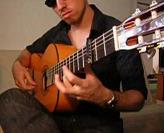

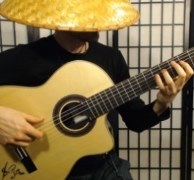



 Thinking of it as an 8-note scale doesn't seem right though. I'll let the pros answer this one.
Thinking of it as an 8-note scale doesn't seem right though. I'll let the pros answer this one. 

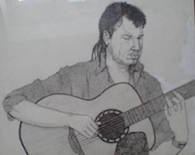







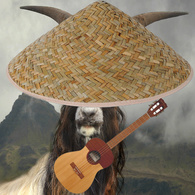
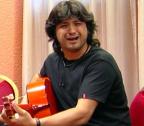
 New Messages
New Messages No New Messages
No New Messages Hot Topic w/ New Messages
Hot Topic w/ New Messages Hot Topic w/o New Messages
Hot Topic w/o New Messages Locked w/ New Messages
Locked w/ New Messages Locked w/o New Messages
Locked w/o New Messages Post New Thread
Post New Thread